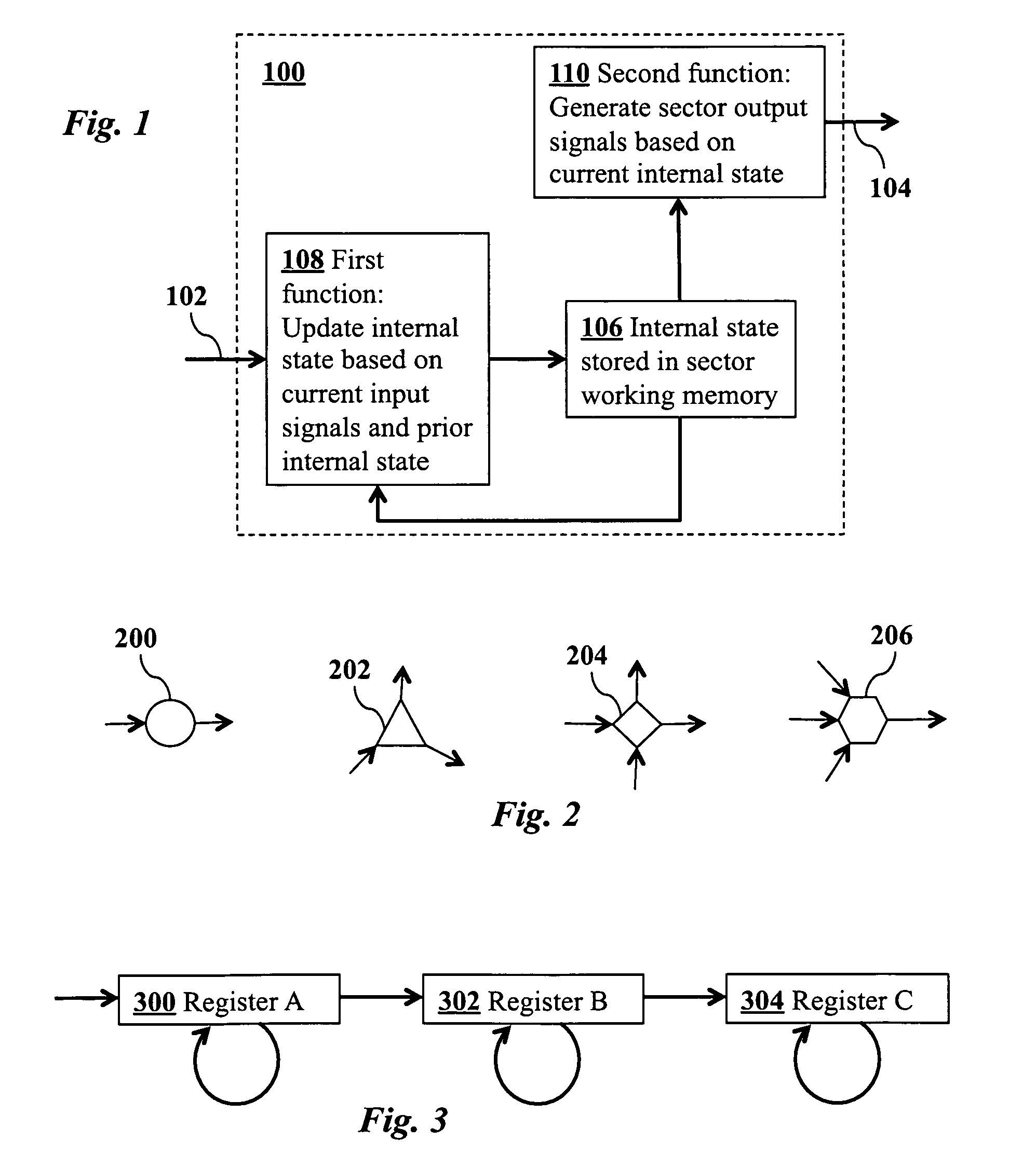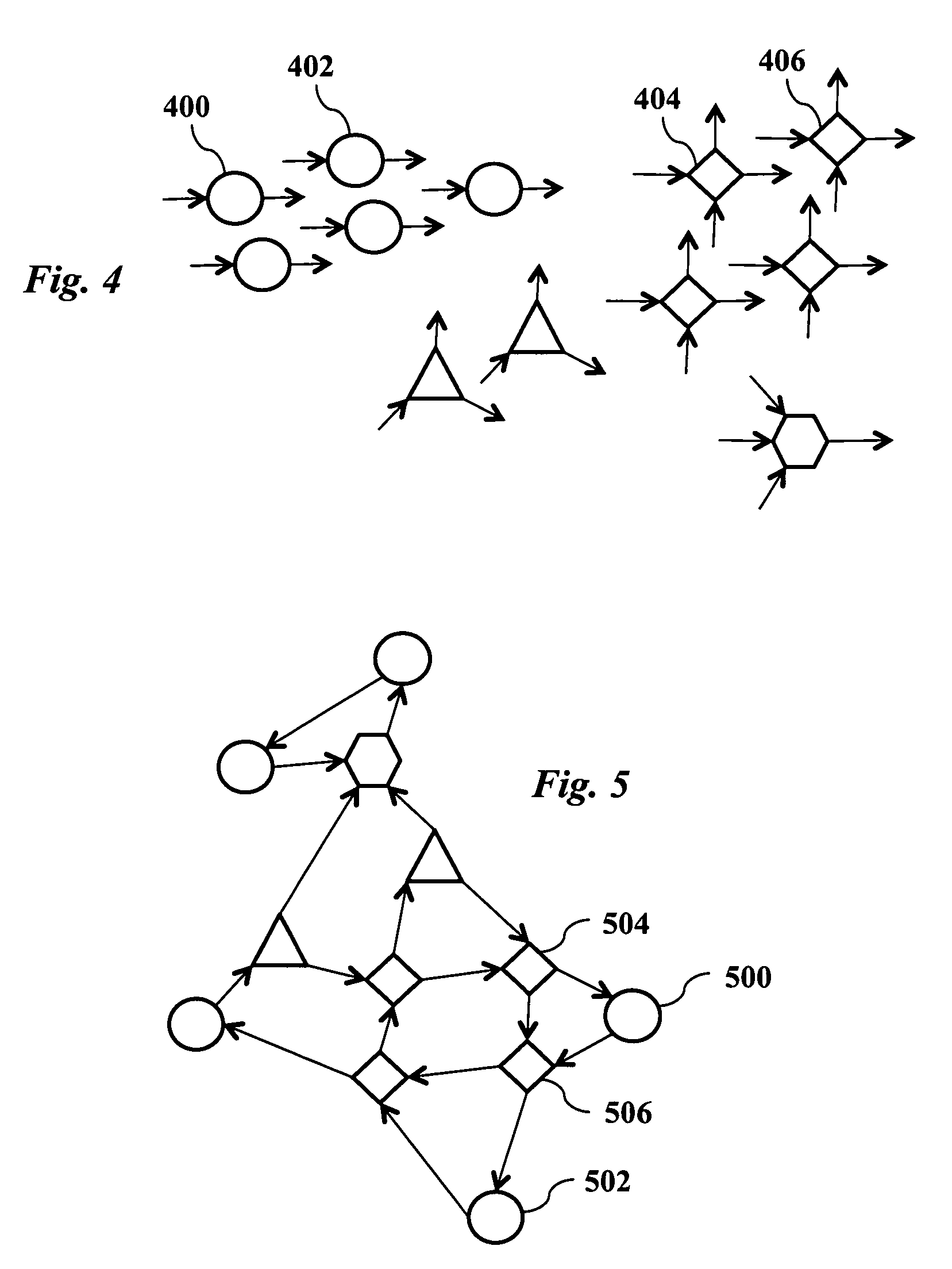Method for efficiently simulating the information processing in cells and tissues of the nervous system with a temporal series compressed encoding neural network
a neural network and information processing technology, applied in the field of neural networks, can solve the problems of inability to represent subtler features of biological neural networks, limited processing abilities, and inability to perform well in applications, and achieve the effect of efficient simulation of very large neural networks, accurate reproduction of neural computation, and efficient computation
- Summary
- Abstract
- Description
- Claims
- Application Information
AI Technical Summary
Benefits of technology
Problems solved by technology
Method used
Image
Examples
Embodiment Construction
[0025]Embodiments of the present invention represent neuron components using finite state machines, which are also called sectors. This representation, as well as various techniques used in embodiments of the invention, may be understood by first considering the following computational black box model.
[0026]As illustrated in FIG. 1, suppose a computational black box 100 has a discrete time input 102, a discrete time output 104, an internal state 106 stored in a working memory, and an unknown algorithm. We assume without loss of generality that the working memory is empty at an initial time. The output signal 104 at a given point in time is thus a function of the entire sequence of input signals received by the box. This function can be decomposed into a first function 108 that maps an input signal 102 and internal state 106 of the box to a new internal state and a second function 110 that maps the internal state 106 to the output signal 104. It is clear, then, that the information o...
PUM
 Login to View More
Login to View More Abstract
Description
Claims
Application Information
 Login to View More
Login to View More - R&D
- Intellectual Property
- Life Sciences
- Materials
- Tech Scout
- Unparalleled Data Quality
- Higher Quality Content
- 60% Fewer Hallucinations
Browse by: Latest US Patents, China's latest patents, Technical Efficacy Thesaurus, Application Domain, Technology Topic, Popular Technical Reports.
© 2025 PatSnap. All rights reserved.Legal|Privacy policy|Modern Slavery Act Transparency Statement|Sitemap|About US| Contact US: help@patsnap.com



